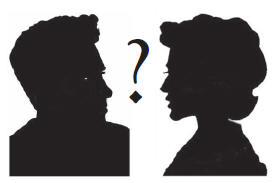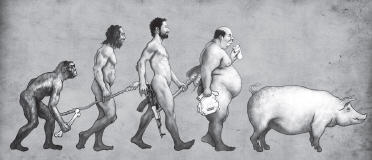Overlooking frequent use of the words ‘if’, ‘but’, ‘perhaps’ and ‘must,’ answers provided by Darwinist thought look so right and convincing. But it is strange. There is a lot of uncertainty on one side and so much certainty on the other side. Here we try to pose some common sense questions that require answers by such a “certain” theory.

1. What about the start?
Darwin’s theory starts off from a point. It doesn’t talk about how did life start in the first place. This fundamental question is very important. Without understanding where life came from, how can we be sure about how did it evolve after that?
Some supporters are very quick to explain very tacitly—living things emerged spontaneously from the chemicals present in warm, shallow waters on the early Earth. But what chemicals?
And what more complicated chemicals emerged from that primordial soup with the ability to reproduce themselves and evolve by some kind of Darwinian process? No one yet knows.
2. What about consciousness?
They simply have no good answers. When does matter combine to produce consciousness? What causes this change? Why is it caused?
Daniel C. Dennett, the director of the Center for Cognitive Studies at Tufts University, has come up with a book title quite audaciously, “Consci-ousness Explained.” He has tried to come up with a scientific explanation for that sense of being that everyone feels.
Ever since Emil Du Bois-Reymond demonstrated in 1843 that electricity and not some supernatural life force travels through the nervous system, scientists have tried to explain mental life biologically. It’s been a long, slow haul. An important step was taken in the early 1940’s when the neurologist-philosopher Warren McCulloch and the teen-age prodigy Walter Pitts showed how webs of neurons exchanging electrical signals could work like little computers, picking out patterns from the confusion buzzing at our senses. Inspired by this metaphor, neuroscientists have been making the case that memories are laid when the brain forms new connections, linking up patterns of neurons that stand for things in the outside world.
But who, or what, is reading these neurological archives? The self? The ego? The soul? For want of a theory of consciousness, it is easy to fall back on the image of a little person — a homunculus, the philosophers call it — who sits in the cranial control room monitoring a console of gauges and pulling the right strings. But then, of course, we’re stuck with explaining the inner workings of this engineer-marionette. Does it too have a little creature inside it? If so, we fall into an infinite regress, with homunculi embedded in homunculi like an image ricocheting between mirrors.
And where do we stop?
3. What about males and females?

It is common knowledge that some organisms reproduce by asexual reproduction (process in which an unicellular organism just divides into two to form two organisms which will undergo the same process further for propagation) while some by sexual reproduction (the male and female of a specie come together and produce the offspring which could be a male or a female). These two systems are completely different in their workings. In the course of evolution, how and when did the transition take place? When did the organisms undergoing asexual reproduction stop doing so and start sexual reproduction consisting of union of male and female forms?
4. Why does it stop at humans?
As per the evolution theory, the current man is at the peak of evolution. Do we really feel so? Is the nature/ behavior/ culture of modern man really the best? There is a lot of technology around than ever before but what about the people who use that technology? Are they better than ever before too? We have to answer this question to guide us to the final answer.
This also smells of anthropocentricism (human centeredness). Modern scientists’ findings always start off from lower life forms and end with the modern human being as the very emblem of development and betterment. But is it compulsory?
There could be more advanced life-forms than present-day humans right now.
6. What about co-existing human beings with different levels of advancements?
Were future scientists to discover the remains of twentieth century aboriginal tribes in some undeveloped, tribal African country untouched by modern technology, and find primitive weapons like knives etc., would it be valid for them to conclude that such were the dominant form of human life in the twentieth century? Is it valid to understand that the whole of earth at such a time was inhabited by human beings of this undeveloped culture? Of course not. Right when African tribes are living using primitive goods, people in most advanced Western countries are using the most advanced technology. However, this is exactly what the scientists predict with fossil findings. Because one particular fossil is dated at a particular date, they conclude that similar people must have inhabited the entire world at the prevalent time. But the particular fossil may represent only a tiny fraction of the entire human race on the planet at that time.

7. What about cremation?
Even today, followers of Hindusim following the Vedic culture cremate the dead bodies by burning them. Such bodies are completely destroyed by the fire, thus leaving no evidence for future paleontologists to speculate about. Some accidents which might involve death in a non-convential way might leave behind some unburnt skeletons, to be later discovered by paleontologists as fossils. But majority will be incinerated. As per the vedic texts, till around 5000 years ago, the world was primarily following Vedic culture, with the exclusion of a few exceptions. Thus, there is a very less chance of getting bones from the ages bygone. Proof of Darwinism rests on a very thin surface of empirical guesswork. It is actually no proof at all.
